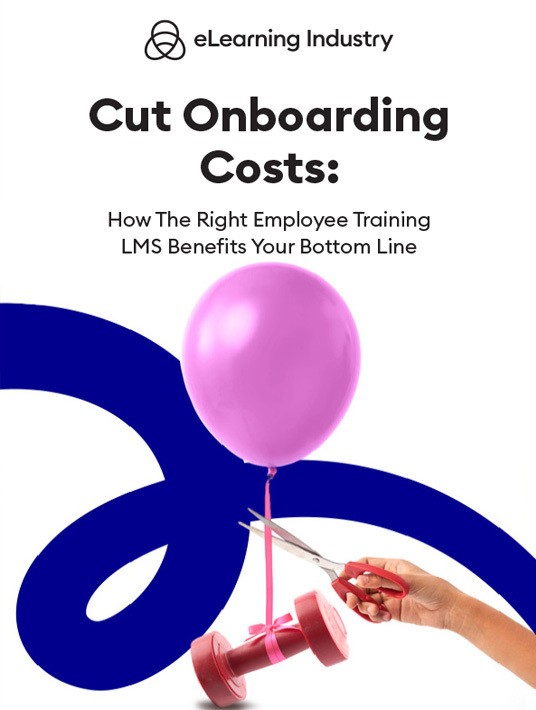LMS As A Facilitator Of Employee Training Challenges
You may have noticed the cyclic obsession with super-foods. A few years ago, it was coconut oil and shea butter. Then it became chia seeds and apple cider vinegar. The latest rage is cinnamon. While they’re on-trend, these products are touted as the answer to everything, from bad skin to poor digestion. In the online learning space, LMS is wielded with the same confidence. They’re regarded as a digital training panacea. But what specific problems can it solve? Let’s explore some of the most common employee training challenges that LMS software can help your organization overcome.

1. Lack Of Personalization
Canned software and pre-built solutions have their own advantages, including deployment speed and ease of use. But software companies might release hundreds of products every year. The one you buy may be distributed to lots of companies similar to yours. So, you might purchase something aimed at accountants, or retail providers. That will adequately cover your general needs. For example, all accountants receive training in book balancing, invoicing, and taxes. But with LMS, you can tailor your training content not just by department, but also by an individual. You can plug in your logo and letterhead, for quicker printing. You can have invoice templates for long-term clients, factoring in their specially agreed discount. Or quotation models for promotional products, accounting for the 20% discount.
2. No Real-World Application
Following the example above, you can structure training by rank. So, the head accountant learns payroll and cash flow while the intern learns debt follow-up, petty cash, and parking fee reimbursement. You can’t get that specific on canned training apps. A generic training app can teach you about overall tariffs and banking rules. Its focus may be national, or global. But when you have in-house LMS, you can develop targeted content. Focus on the context of your organization, including tasks you perform every day. Driving courses in the US may vary from those in the UK, even if it’s the same multinational organization. If you design your course by LMS, you can tweak the same training session to cover both sides of the pond. (I.e. left-hand drive vs right-hand drive, roundabout vs intersections, T-junctions vs overpass/underpass, etc.) Online employee training software also allows you to incorporate simulations, scenarios, and games that facilitate mistake-driven learning. Employees are able to make errors in a risk-free space, to avoid making them on-the-job.
3. Traditional Training With No JIT Support
Just-in-time training is a critical resource that too many employee training program developers ignore. It’s not necessarily because they don’t see its value. It’s more because these training emergencies are highly customized. For instance, any sales team can benefit from lessons on starting sales conversations and closing the deal. But they might need help calculating rebates and discounts by location, situation, or scenario. Say … selling perfume to a man shopping for his wife. Vs selling it to a woman shopping with her grown daughter and teenage granddaughter. Or at a premium boutique vs a pop-up demo stall in a craft fair or mall. Discounts can be employed in all these cases, and the product is the same. But a quick infographic reference chart could help your salesperson to (profitably) clinch all those sales. This isn’t possible with regular training software.
4. Training Flexibility
With traditional training, employees are extremely limited when it comes to upskilling and bridging gaps. They usually only have one opportunity to address issues, which is during the scheduled ILT session. For example, the monthly compliance crash course or sales meeting. An employee training LMS gives them the chance to train whenever it’s most convenient and whenever they identify areas for improvement. Such as when they’re on the sales floor and realize they don’t know how to perform a task. They can even be proactive about their training and access the course content on their days off. In order to brush up on skills, cross-train for different departments, or get on the fast track to a leadership promotion. Another flexibility benefit is being able to access training tools on any device from anywhere in the world. Especially if you invest in employee training software that features responsive support.
5. Bureaucratic Delays In Content Updates
Especially in matters of compliance, the rules can change on a dime. With pre-built online employee training solutions or ILT sessions, they have to upgrade all the relevant materials. Content isn’t their primary focus, so it could take a while. They have to reach the right people, get the necessary permissions, find the right experts and put together a working package. With LMS, you’re only dealing with your individual organization and its space within your sector. And you’re only concerned with regulations that directly affect your brand. You have in-house content experts and unfettered access. Updating content – for compliance or any other reason – is faster and more feasible when you have your own system. Plus, you won’t have to pay extra cash for branded upgrades.
Conclusion
Employee training software can solve a lot of problems, but first, you have to identify and assess them. What training challenges exist in the online space, and how can these management systems help? Canned software often has a dearth of personalization, real-world context, JIT support, and update delays. Purchase and install a versatile employee training LMS that you have full control of. That way, all these issues can be easily, quickly, and effectively resolved.
Avoid these common employee training challenges by investing in the right LMS for your team. Get started by using our online directory to whittle down the options and evaluate product reviews. Then see how offers free trials and demos to test it out for yourself and see if it’s a worthy investment.
Starting a new job is all kinds of stressful, but fresh recruits keep the company young, vibrant, and relevant. How can you ease their transition into your workspace? Download the eBook Cut Onboarding Costs: How The Right Employee Training LMS Benefits Your Bottom Line.








